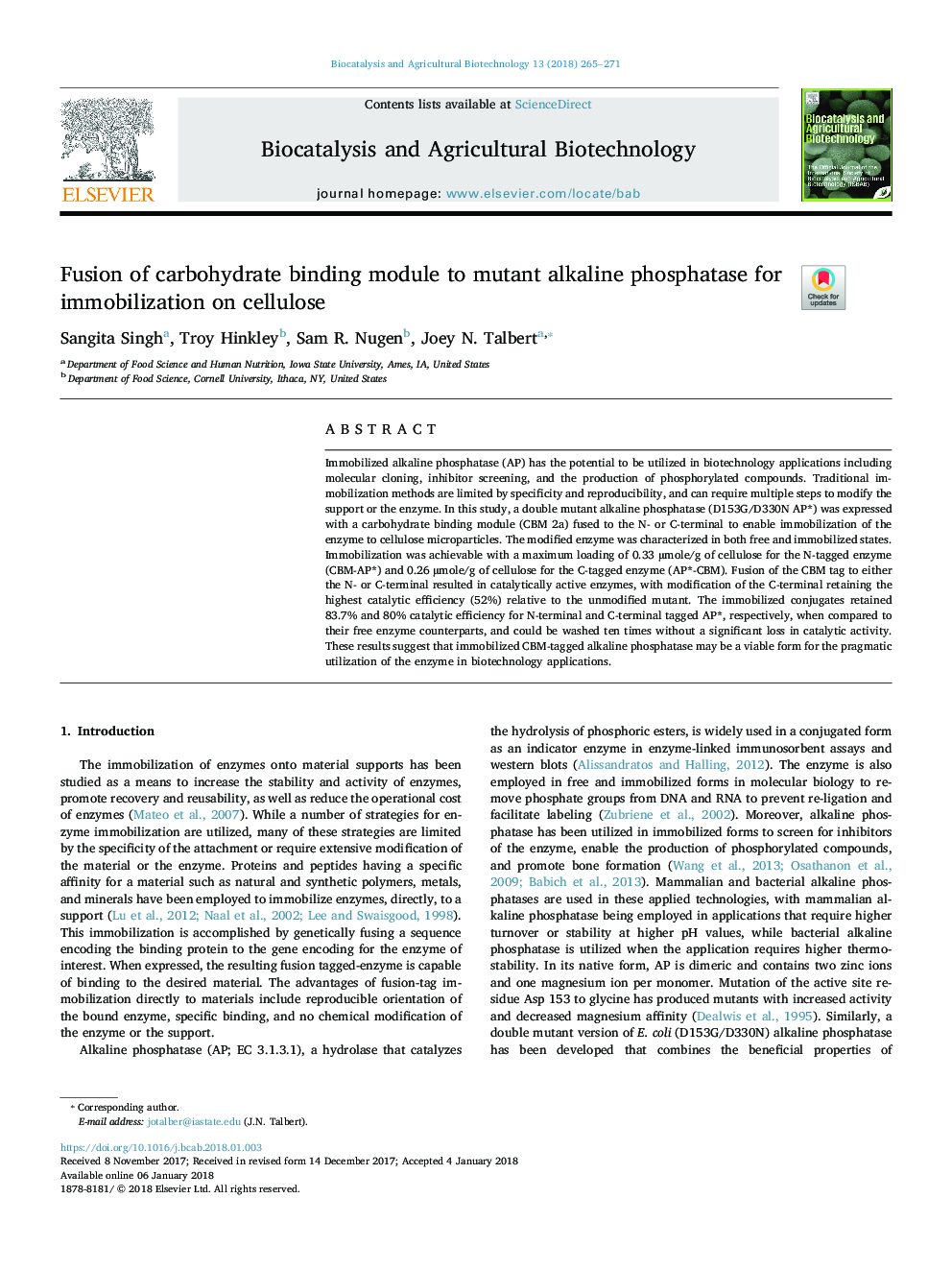| Article ID | Journal | Published Year | Pages | File Type |
|---|---|---|---|---|
| 8406082 | Biocatalysis and Agricultural Biotechnology | 2018 | 7 Pages |
Abstract
Immobilized alkaline phosphatase (AP) has the potential to be utilized in biotechnology applications including molecular cloning, inhibitor screening, and the production of phosphorylated compounds. Traditional immobilization methods are limited by specificity and reproducibility, and can require multiple steps to modify the support or the enzyme. In this study, a double mutant alkaline phosphatase (D153G/D330N AP*) was expressed with a carbohydrate binding module (CBM 2a) fused to the N- or C-terminal to enable immobilization of the enzyme to cellulose microparticles. The modified enzyme was characterized in both free and immobilized states. Immobilization was achievable with a maximum loading of 0.33 µmole/g of cellulose for the N-tagged enzyme (CBM-AP*) and 0.26 µmole/g of cellulose for the C-tagged enzyme (AP*-CBM). Fusion of the CBM tag to either the N- or C-terminal resulted in catalytically active enzymes, with modification of the C-terminal retaining the highest catalytic efficiency (52%) relative to the unmodified mutant. The immobilized conjugates retained 83.7% and 80% catalytic efficiency for N-terminal and C-terminal tagged AP*, respectively, when compared to their free enzyme counterparts, and could be washed ten times without a significant loss in catalytic activity. These results suggest that immobilized CBM-tagged alkaline phosphatase may be a viable form for the pragmatic utilization of the enzyme in biotechnology applications.
Related Topics
Life Sciences
Agricultural and Biological Sciences
Agricultural and Biological Sciences (General)
Authors
Sangita Singh, Troy Hinkley, Sam R. Nugen, Joey N. Talbert,
